This post may contain affiliate links. Please read our disclosure policy.
Gluten free shortcrust pastry, similar to pie dough but firmer and more crumbly, is made with simple ingredients like an all purpose gluten free flour blend, cold chopped butter, and water, plus an egg yolk for richness. The yolk helps make the pastry melt-in-your-mouth delicious.
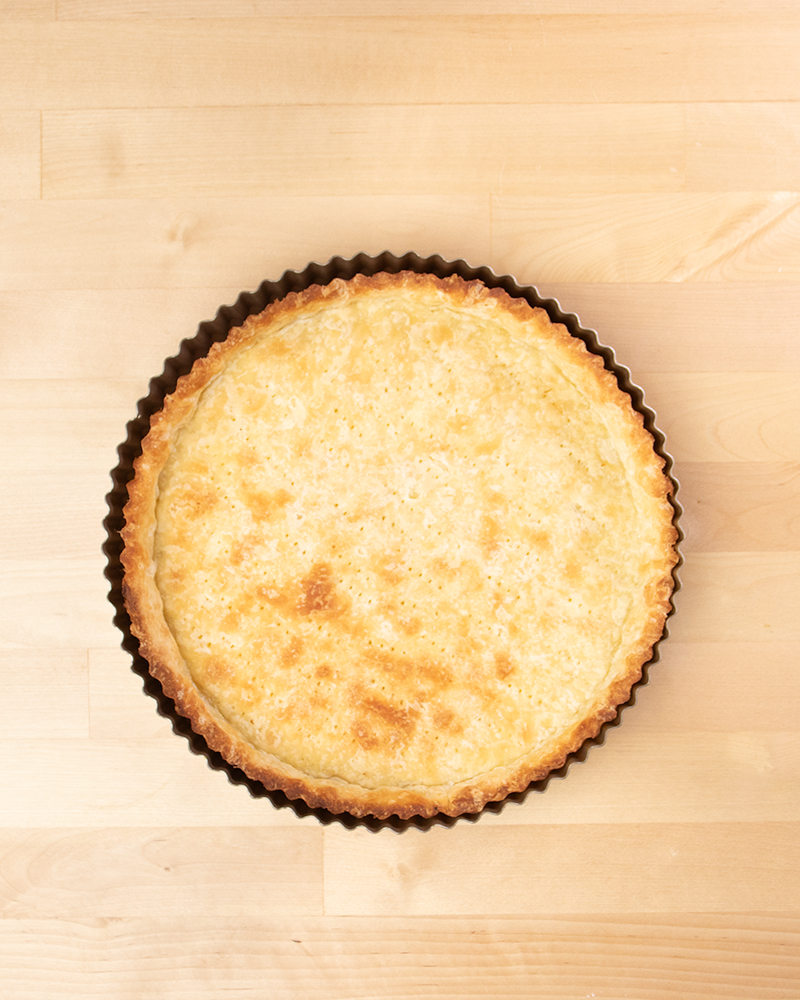
Why you'll love this gluten free pastry
This simple, basic recipe, which is perfect for my gluten free fruit tart, is:
- Easy to handle (rolls out very smoothly)
- Firmer than classic pie crust
- Made entirely by hand (no stand mixer or food processor required)
- Rich and buttery, but light and neutral-tasting for a sweet or savory filling
- Ideal for single-crust pies with a chilled filling like our no bake cheesecake or gluten free chocolate pudding pie because it tastes great cold
Key ingredients
- Gluten free flour blend: Gluten free pastry like this is best made with a well-balanced high-quality flour blend with very finely ground ingredients like Better Batter's original blend or Nicole's Best Multipurpose blend (with added xanthan gum). Bob's Red Mill 1-to-1 should also work, but you may need to add another 1/8 teaspoon of xanthan gum to help the crust hold together.
- Confectioners’ sugar: Confectioners’ sugar adds sweetness without adding any weight. Make sure you sift it, though, or you’ll find little clumps of it in your pastry.
- Kosher salt: Brightens the buttery flavor and balances the gentle sweetness.
- Butter: Butter provides richness and cold butter expands in the oven to create flakiness.
- Cold water: Hydrates the dough properly and keeps the butter cold so it doesn't melt into the flour before it goes in the oven.
- Egg yolk: Adds richness and makes the dough a bit more crumbly so it melts in your mouth.
How to make gluten free shortcrust pastry
Step 1: Make and chill the dough
Whisk together cold water with the yolk of one egg, at room temperature to prevent the yolk from combining fully with the water. Add some ice to keep it cold, and set the mixture aside.
Whisk together the flour blend with xanthan gum, confectioners' sugar, and salt. Add in cold, chopped butter and toss to ensure that every piece of butter is coated in flour to keep the butter from sticking to itself. Flatten the butter into thin shards that will stay whole but combine more easily when you add the water.
Mix in the whisked water and egg yolk to bring the dough together. To avoid adding too much water and having an overly sticky dough, isolate any dry portions of the dough and add more cold water only by the drop.
Wrap the dough in a disk and cover tightly with plastic wrap to chill it until it's firm. This will allow the flour to absorb the liquids and ensure the butter hasn't begun to melt at all.
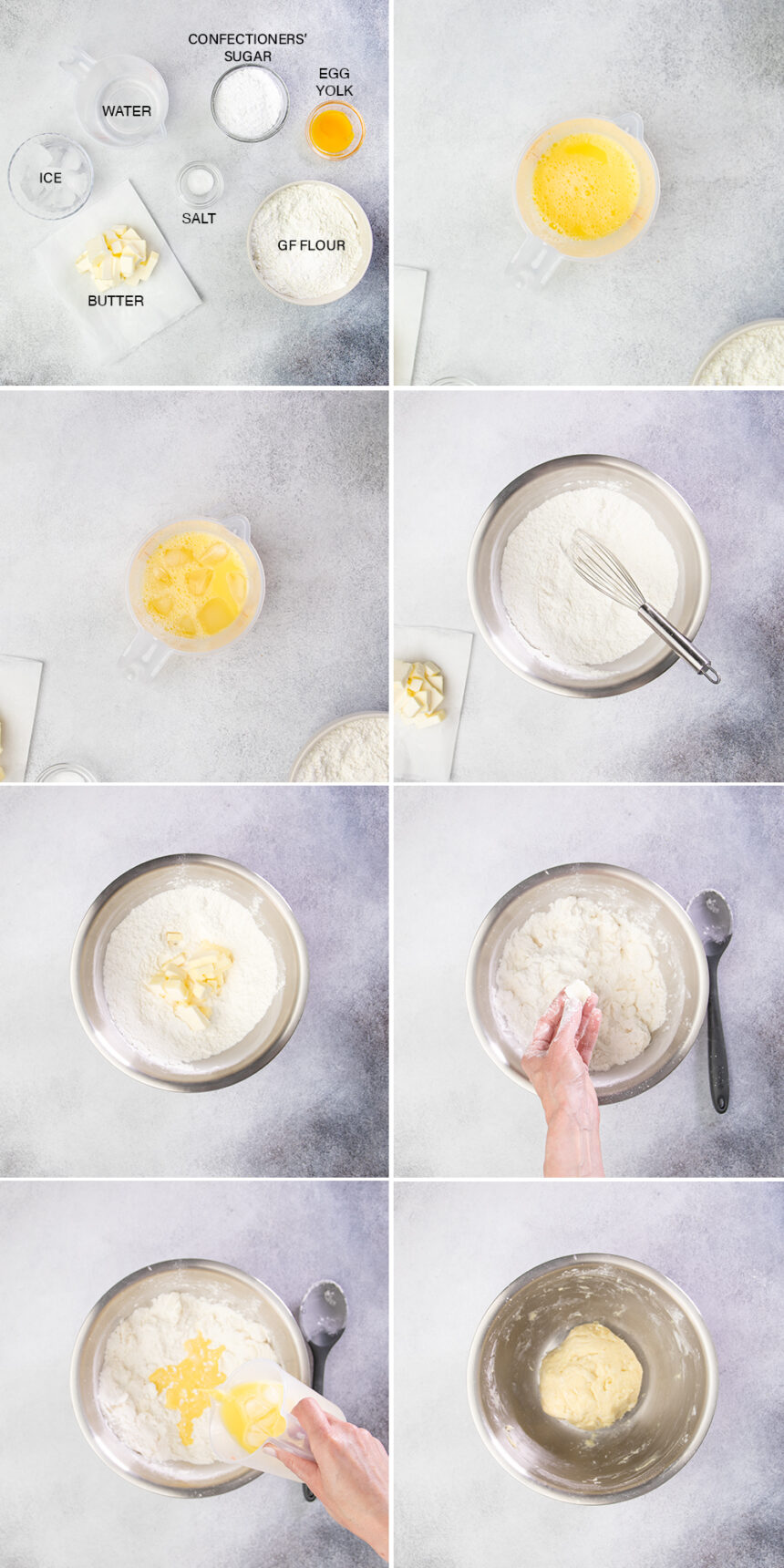
Step 2: Shape and bake the pastry
The process of shaping and baking a shortcrust pastry is very similar to the process of baking a pie crust. The same principles of keeping the ingredients cold, handling everything quickly, and using a light touch also apply. Here's how:
To smooth out the dough, we're going to roll it out, fold it, then roll it again. Sprinkle the chilled disk of dough lightly with more flour. Use a rolling pin to roll it out into a rough rectangle that's about 1/2-inch thick. Fold it in thirds like a business letter, then fold in the sides to create a packet. Repeat the process once more to create a very smooth dough. It shouldn't have too many cracks.
Roll out the dough into a round about 2-inches larger in diameter than the tart pan you're using. This allows you to create a precise edge around the pan by trimmed off the excess.
Gently roll the crust loosely onto the rolling pin to transfer it to the tart pan without tearing it. Press it gently into the bottom and the sides of the pan, and trim the edges.
To keep the pastry from puffing up in the oven, pierce the raw crust all over with the tines of a fork.
Brush the bottom surface of the crust generously with an egg white to create a seal during baking that prevents the crust from getting soggy when filled.
Line the pastry crust with a piece of parchment paper, and cover the bottom of the crust with dried beans or ceramic or other heat-safe pie weights.
Bake for 20 minutes at 375°F to begin browning, reduce the oven temperature to 350°F, remove the paper and weights, and finish baking the crust fully.
If you plan to use this to make a baked filling, bake only for the first 20 minutes, remove the crust lining and weights, fill, and then return the crust to the oven to finish baking.
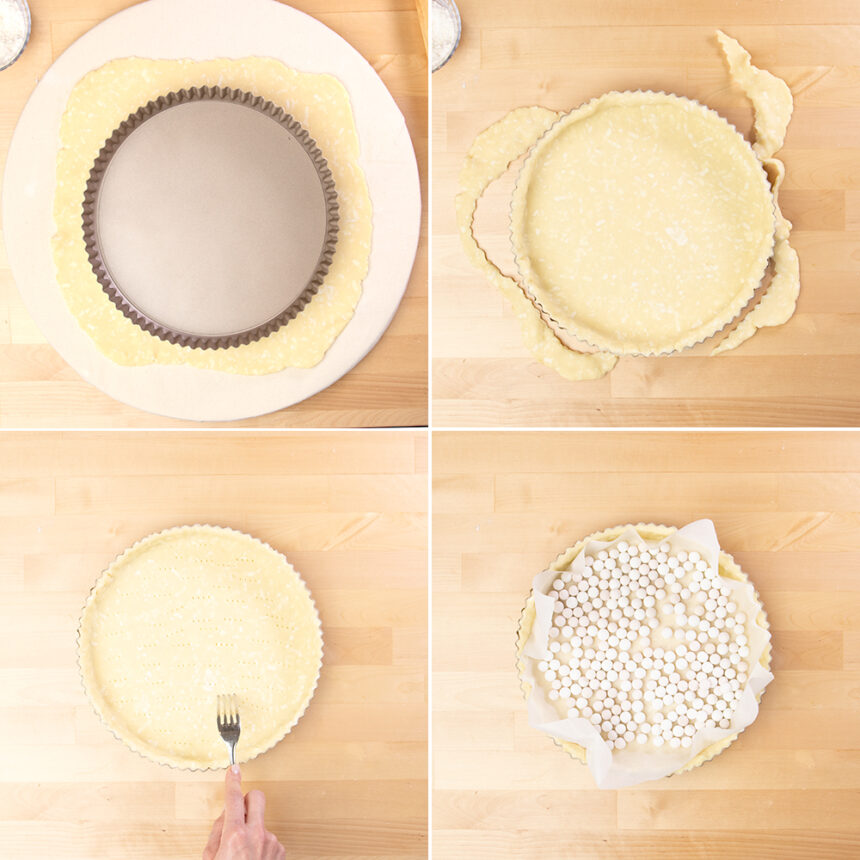
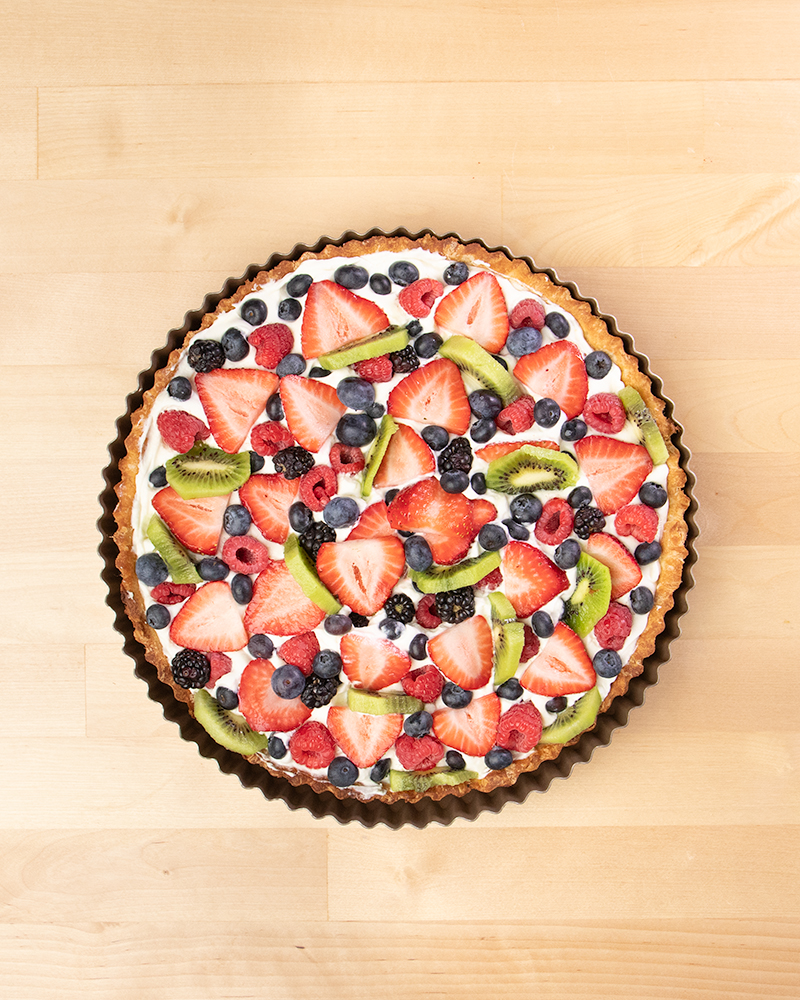
Expert tips
Keep everything cold
In making shortcrust pastry, like in most pastries, temperature matters a ton. Be sure to keep your butter cold, and your water cold. The egg yolk blends more easily into the cold water if it's at room temperature, but it's fine if that's cold, too.
Don't add too much water
Begin with no more than 3 fluid ounces (less than 90 ml) of cold water, and only add more if strictly necessary. If you see any dry flour, add extra water by the drop directly to those crumbly bits to moisten them. If you overmeasure the water, you'll be inclined to add more flour to sticky dough which upsets the balance of flour to butter.
Chill sticky dough
If your dough seems wet and overly soft, instead of adding more flour right away, wrap it tightly in plastic wrap and chill for at least 2 hours, and if possible overnight. That will give the flour a chance to absorb some of that extra moisture. If the dough is still tacky to the touch (you touch it and it leaves a residue on your finger), just sprinkle some extra gluten free flour on it as you're rolling it out and it should roll out smoothly.
Mix by hand
This pastry is best when made by hand, which allows you to keep the chunks of butter larger and more irregular, which makes for a lighter pastry. You can also more easily avoid adding too much liquid when you do it by hand.
If you must use a food processor, pulse lightly, and try to add the water and yolk mixture by hand so you can add more moisture carefullly.
If your pastry cracks
If your dough is cracking because it appears dry and isn't holding together properly, sprinkle it lightly with water (literally, sprinkle it with water from your fingertips) and press and roll the dough back together. If the dough hasn't cracked, but instead really has just torn, fold it over on itself, then roll it out again and proceed with the recipe.
If the dough seems oily, that means that the butter has begun to melt. Wrap it tightly and chill it right away.
Ingredient substitutions
Dairy free
You should be able to make this recipe dairy free by replacing the butter with vegan butter. My favorite brands are Melt and Miyoko's Kitchen, but they do have more moisture than butter so they do tend to be softer than butter. That can make them hard to chop and difficult to keep cold as you handle them with warm hands. Just be sure that your water is very cold, and begin with less water, maybe even 1/4 cup (2 fluid ounces) ice water and add more sparingly as you bring the crust together.
Egg free
The egg yolk in this shortcrust pastry adds richness and changes the texture a bit. If you can't have eggs but would still like that richness, try using 1 tablespoon (14 g) of olive oil in place of the egg yolk.
Gluten Free Shortcrust Pastry Recipe
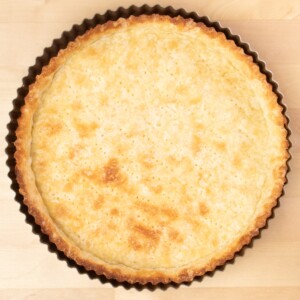
Equipment
- Ceramic pie weights or dried beans
- 11-inch tart pan with removable bottom or other pan for baking the pastry
Ingredients
- ⅜ cup (3 fluid ounces) cold water, with ice, plus more by the half-teaspoon as necessary
- 1 (50 g) egg, at room temperature, separated
- 1 ½ cups (210 g) all purpose gluten free flour blend, (See Recipe Notes), plus more for dusting
- ¾ teaspoon xanthan gum, omit if your blend already contains it
- ½ cup (58 g) confectioners’ sugar sifted
- ½ teaspoon kosher salt
- 8 tablespoons (112 g) unsalted butter, roughly chopped (into large chunks) and chilled
Instructions
To make the raw crust.
- In a small bowl or measuring cup, whisk the egg yolk (reserve the white) and 3/8 cup cold water until well combined. Add some ice to the mixture to keep it cold, and set it aside.
- In a large bowl, place the flour, xanthan gum, confectioners’ sugar, and salt, and whisk to combine well.
- Add the chopped and chilled butter, and toss to coat the butter in the dry ingredients.
- Press each floured chunk of butter between a floured thumb and forefinger to flatten. Work quickly, only handling each piece of butter once.
- Create a well in the center of the large bowl of dry ingredients, and add the egg yolk and water mixture, taking care to filter out the ice.
- Mix to combine. The dough will come together.
- If there are any very crumbly bits, add more ice water by the half-teaspoon and mix to combine. Knead the dough together lightly just enough to press it into a disk.
- Transfer the dough to a large piece of plastic wrap. Cover and press into a disk.
- Refrigerate for at least 2 hours or up to overnight. You can chill the tightly-covered tart dough for up to a week, but it may be too difficult to roll out at first. Just allow it to rest at room temperature for about 10 minutes or until it rolls more easily (but make sure the dough stays cold).
- Once the dough has chilled, preheat your oven to 375°F. Grease the bottom and sides of an 11-inch round tart pan with a removable bottom, or other pan you'd like to bake your pastry in, and set it aside.
- Unwrap the dough, then turn it out onto a well-floured surface. Dust the surface with a bit more flour, and roll it out with a rolling pin into a 1/2-inch thick rectangle.
- Fold the rectangle in half lengthwise, dust again lightly with flour, and roll the dough out again into a 1/2-inch thick rectangle.
- Once more, fold the rectangle in half lengthwise, and then fold again widthwise to create a thick square.
- Dust the square lightly with flour, and roll the dough out into a round that is about 13-inches in diameter (or about 2 inches larger in diameter than the diameter of the pan you have chosen).
- Transfer the round of dough to the prepared pan, and press it gently into the bottom and the sides of the pan.
- Using a knife or kitchen shears, trim the edges of the dough flush with the upper edge of the sides of the pan.
- Pierce the bottom and sides of the tart crust with the tines of a fork about 25 times.
- Brush the bottom surface of the crust generously with the egg white. Place the crust in the freezer for about 5 minutes or until it is beginning to feel firm.
To fully bake the crust.
- Cover the bottom of the crust with parchment paper, and then dried beans or heat safe pie weights.
- Place the tart crust in the center of the preheated oven and bake for 20 minutes at 375°F.
- Reduce the oven temperature to 350°F, and remove the parchment and pie weights from the tart.
- Return the tart crust to the oven and bake at 350°F for another 10 minutes or until dry to the touch and lightly golden brown in spots.
- Remove the tart crust from the oven and allow it to cool fully before filling.
Notes
My favorite gluten free flour blends are Better Batter's original blend, Nicole's Best Multipurpose Gluten Free Flour (with added xanthan gum), and Bob's Red Mill's 1-to-1 blend (in the blue bag). For information on how to DIY your own blend, please see the all purpose gluten free flour blends page.
Nutrition
Nutrition information is automatically calculated, so should only be used as an approximation.
FAQs
You can make a savory gluten free shortcrust pastry like we did for our gluten free tomato tart, and replace the confectioners' sugar with 1/4 cup (35 grams) more all purpose gluten free flour. All the other recipe instructions are the same.
I don't recommend using this recipe to make a double-crust pie. I recommend using our recipe for gluten free pie crust for that, which is less fragile for double crust pies, and everything in between.
This recipe is written to make a single 11-inch tart, with some scraps left over. You can also use it to make 6 or 7 4-inch tartlets, or probably close to 12 mini tarts made in a standard 12-cup muffin tin. The smaller the tartlet, the thinner you'll want to roll the crust so it doesn't overwhelm the filling.
When pastry is tough, not tender, it's usually because there was too much liquid in the dough, or the butter wasn't kept cold so it melted into the dough when it was still raw. Be sure to use cold butter, chopped into chunks that you cover in flour and then flatten into shards, and ice water to keep everything cold. Measure the additional water very slowly and sparingly. Also, be sure to chill your dough after you shape it and before you work with it.
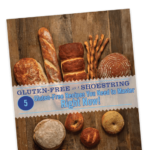
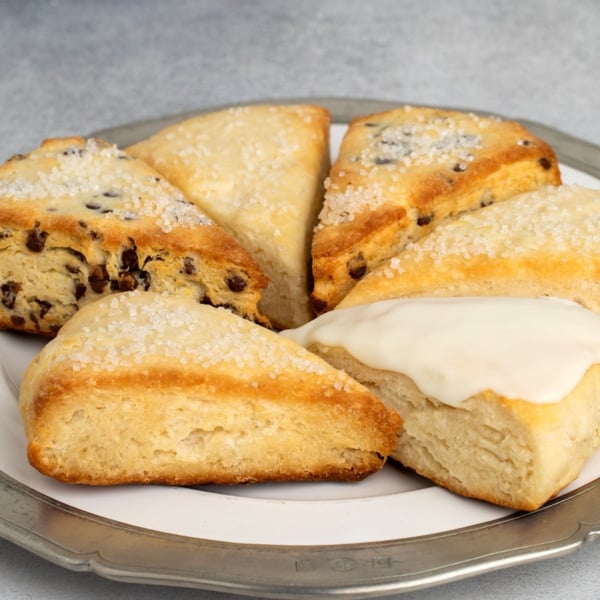
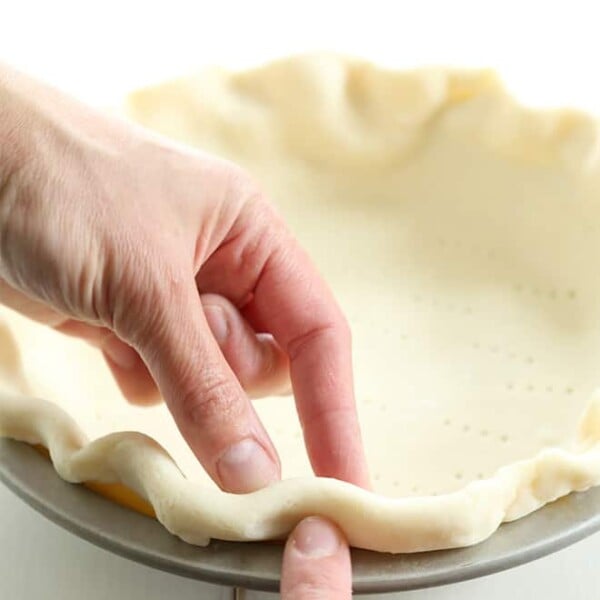
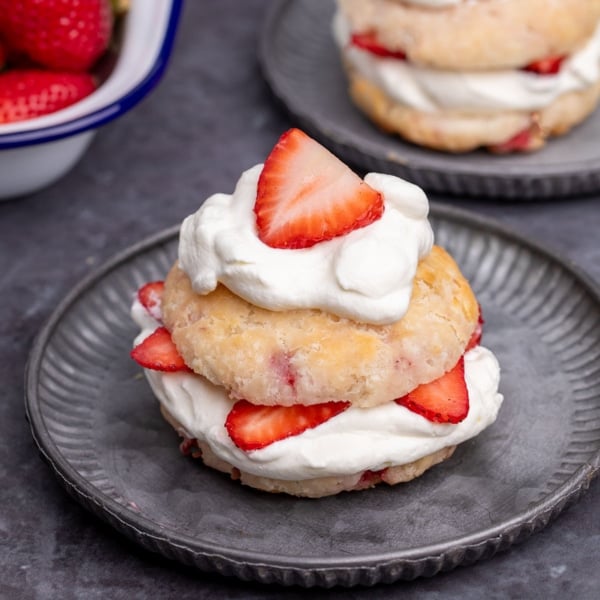
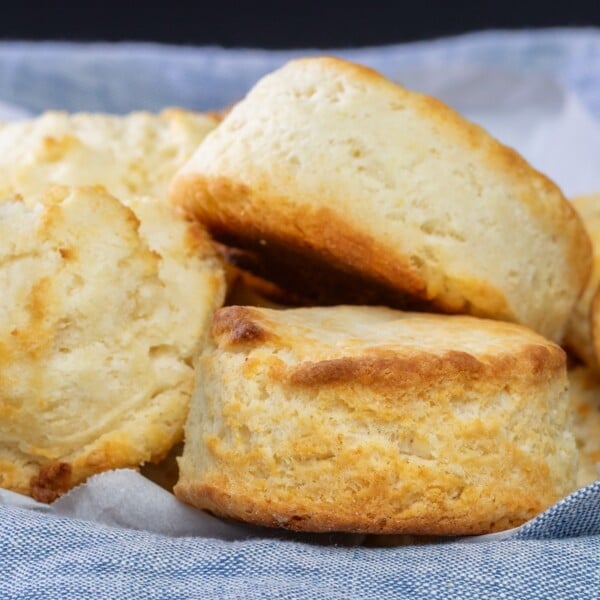









Why do you use a room temperature egg, when a short crust outcome revolves around keeping all the ingredients and equipment very cold before?
If the egg is cold, it’s much more difficult to beat it into the water, even though the water is cold, Michael.
Will this recipe work with Nicole’s Best flour?
Hi, Jo Ann, Yes! Any of my recipes that calls for an all purpose gluten free flour blend will work with Nicole’s Best. You just need to be sure to add the correct amount of xanthan gum according to the “Nicole’s Best usage guide” that’s on the flour sales page. Here, that’s a heaping 1/2 teaspoon xanthan gum per cup, and since there’s 1 1/2 cups all purpose gluten free flour blend (210 g) in this recipe, you’ll use a heaping 3/4 teaspoon xanthan gum. And thanks for giving Nicole’s Best a try!
Can I make this with Miyokos plant based butter and remove any additional salt that’s in the pastry recipe for a dairy free version?
Please see the text of the post under the heading “Gluten free dairy free shortcrust pastry” for suggestions, Debra! Miyoko’s Kitchen has an unsalted variety, which is what I would always suggest you use.